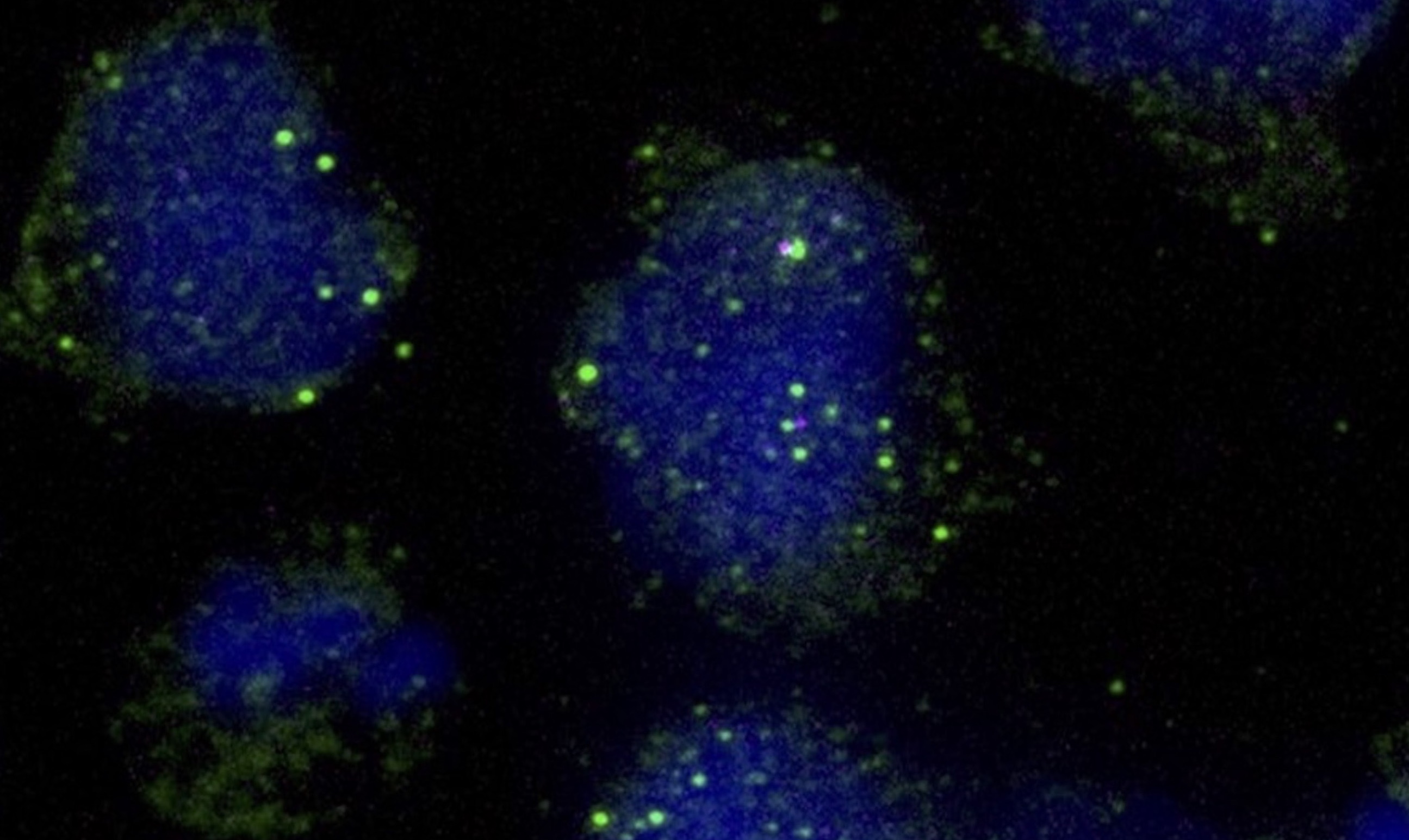Gene expression defines the fate and function of each cell. Our recent work and others have demonstrated that post-transcriptional regulation of gene expression by RNA-binding proteins (RBPs) plays a critical role in cancer including leukaemia and lymphoma (Vu,…, Nguyen et al. 2017; Nguyen et al. Nat. Comms 2020; Cheng,…, Nguyen et al. Cancer Cells 2021; Prieto and Nguyen et al. Nat Cancer 2021; Mlynarczyk,…Nguyen et al. Science. 2023).
Importantly, the identification of dysregulated RBPs in cancer has led to the rapid development of therapeutic strategies to specifically target several RBPs. Despite their importance and therapeutic potential, only a small fraction of RNA regulators (more than 1,700 known RBPs) has been investigated, highlighting the potential for further exploration of novel vulnerabilities.
Post-transcriptional regulation of normal haematopoietic and acute myeloid leukaemic stem cells
Stem cells are key to our normal development. When a stem cell divides into two, it creates one progenitor and one renews itself. The progenitor continues differentiating into mature specialized cells while the stem cell repeats the division cycle of making progenitors and reproducing themselves. Stem cells survive much longer than ordinary cells, increasing the chance of accumulating mutations. It might take only a few mutations for one cell to lose control over its self-renewal, divide uncontrollably and become the source of cancer.
Cancer stem cells (CSCs) are a small population of rare cells that can self-renew and differentiate into cancerous cells that proliferate uncontrollably, supplying the tumor mass. Conventional therapies, such as chemo- or radiotherapy, often target proliferating cells, leaving CSCs untouched. Therefore, CSCs are the underlying source of drug resistance and disease relapse. CSC theory has been experimentally well proven in the context of Acute Myeloid Leukaemia. Understanding the biology of normal haematopoietic (HSCs) and leukaemic stem cells (LSCs) is the key to developing selective strategies to kill cancer stem cells.
Our lab aims to expand understanding of how dysregulated post-transcriptional processes contribute to the initiation and progression of various types of leukaemia. We particularly focus on acute myeloid leukaemia (AML) which has been one of the most aggressive and fatal types of blood cancer. To achieve this aim, we will:
- 1. Determine the role of a subset of aberrantly expressed RBPs in LSC survival and whether they contribute to leukaemia pathogenesis.
- 2. Investigate how these RBPs control normal HSCs behaviours.
- 3. Elucidate the molecular basis for RBP functions in AML cells.
Post-transcriptional regulation of B-cell lymphoma
Non-Hodgkin Lymphoma, of which majority arise from B cells transiting the germinal centre (GC) reaction, ranks between the 5th to 9th most common cancer in most countries worldwide. GC is a structure in which B lymphoid cells mature into plasma or memory B cells to build our immunological memory for future antigen recalls. GC-derived lymphoma are aggressive and rapidly progressing diseases with some form almost never cured. Standard treatment includes combination of anti-CD20 monoclonal antibody with chemotherapy. Approximately 30%-40% of patients either relapse or are refractory to this treatment and die of their disease. This highlights the unmet clinical needs for novel targeted therapies in B-cell lymphoma.
While somatic alterations in genetic and epigenetic mechanisms regulating transcription in tumorigenesis have been intensively studied, the role of post- transcriptional regulation (PTR) of gene expression in cancer development has only emerged recently (Mlynarczyk et al. Science. 2023). This study aims to identify the functional requirement of newly identified RBPs in B-cell lymphoma, and to determine their therapeutic potential in lymphoma treatment.

Our Methods
We will address our aims using state-of-the-art tools including unbiased omic approaches to map RBPs’ binding sites and activities including HyperTRIBE (Nguyen et al., Nat Comms, 2020), Ribo-STAMP (Brannan et al. Nat Methods 2021) and high-end Mass spectrometry, combined with haematopoietic assays, molecular/cell biology techniques, on human cell lines, primary patient samples and patient-derived xenografts and mouse genetic models.
The ultimate goal of our research is to determine the potential targetable RBPs and their molecular mechanisms of action. Once validated, these targets can be used for designing innovative drugs that selectively cancer cells, while sparing normal stem cells.